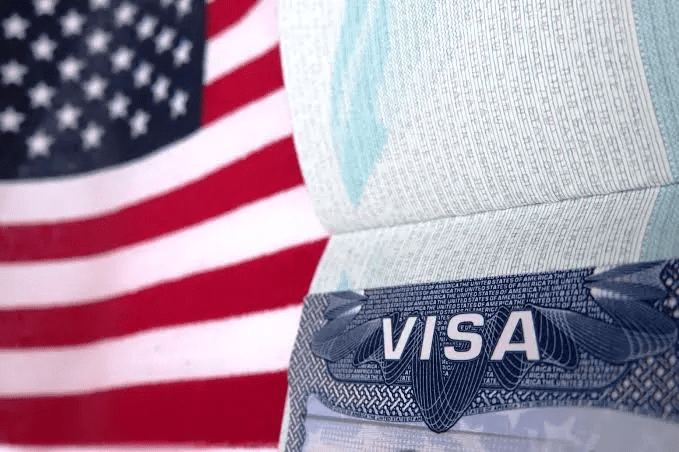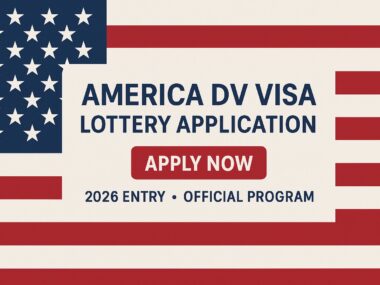The United States has the world’s largest economy and this sustained boom is driven in large part by immigrants. However, if a foreigner wishes to come to the US to work, there are different visa types that they can apply for.
Most US work visas require a job offer from a US-based employer who will act as the visa sponsor. For each US work visa category, there are a set of requirements that applicants must meet.
These requirements are usually set up by legislation and change from time to time. It is important to be conversant with the criteria of a visa before applying for it. In addition, they involve a series of documentation and processes for employers and employees.
You must follow the guidelines to improve your chances of approval to enter the US and undertake paid employment. This article will discuss extensively the different US work visas that permit foreigners to work in the country.
What is a US Work Visa?
Different US visas are available depending on your line of employment and whether you intend to remain temporarily or permanently. Understanding the various visa categories and requirements can help you choose the one that best suits your needs.
To pursue a job in the United States, an employee might require both an employment visa and an additional work permit. Additionally, some people have non-employment-based statuses, which allow them to work, but only after obtaining a work permit.
Examples include:
- K1 visa holders.
- Individuals with temporary protected statuses.
- People with asylum seeker status.
- F1 students are experiencing financial hardship.
Types of US Visa That Permit You to Work in the Country
Temporary Worker Visas
If you have a temporary labor visa, you can remain in the US for a predetermined period. Unless you decide to reapply and extend the date, you are legally required to leave the United States by the date your visa expires. The following nonimmigrant or temporary worker visas allow workers to work in the US for a particular employer.
1. H-1B Specialty Occupation
This type of work visa, which is the most common in the US, allows people from foreign nations who work in specialized fields like computer science or engineering to apply. Due to the strong demand, the availability of this kind of visa is capped annually.
In addition, this visa is available to applicants with a bachelor’s degree or above who have received a work offer in a specialist role from a US employer.
2. L-1 Visa
Workers employed by foreign enterprises that have direct ties to US companies are eligible for this kind of temporary worker visa. If an employee’s company relocates them to the US, they would apply for this type of work visa.
Additionally, if a foreign business transfers an employee to open an office in the US, this kind of work visa can be necessary. Workers may be eligible if they have worked for the foreign company for a full year in the three years before coming to the US.
Meanwhile, it’s important to note that there are two categories for this type of visa:
- L-1A: Managers and executives sent to the US to work at or establish a new US location may be eligible for an L-1A visa.
- L-1B: Employees below the manager level may qualify for an L-1B visa to work for the organization in the US if they have specialized knowledge about the business, its product, or its processes.
3. O-1 Visa
Those who possess exceptional skills in their industry are eligible for this temporary employment visa. These candidates offer evidence that they are at the top of their field and well-known both domestically and abroad for their accomplishments to show that they are exceptional at their jobs.
Individuals working in fields such as education, business, science, the arts, sports, and entertainment may be eligible for this kind of visa. Managers and personal assistants who assist exceptional workers may also be eligible.
4. E-1 and E-2 Visas
People from specific countries can go to the US with this type of visa to conduct business. E-1 work visas are available to treaty traders, and E-2 work visas are available to treaty investors. Treaty traders are those from a nation with a trade agreement with the US who engage in continuous trading activity.
Those who have made significant financial investments in US companies and can demonstrate their intention to grow their investments are considered treaty investors.
5. TN Visa
The Tennessee work visa was established under the North American Free Trade Agreement (NAFTA). It is intended for Canadian or Mexican nationals who wish to travel to the US to work for a company.
To be eligible, you must demonstrate that you are a citizen of one of those countries, obtain a job offer from a US company, and hold a position that qualifies you under NAFTA. Lawyers, scientists, engineers, accountants, and pharmacists are a few examples.
6. E-3 Visa
Only Australian foreign nationals with specialized occupations, their wives, and any children under 21 are eligible for this visa. Only a small number of these visas—which do not include each applicant’s spouse or children—are granted each year.
Among the prerequisites are a bachelor’s degree or its equivalent in another country, a specific skill set needed to fill a specialty role, and an offer of employment from a US corporation.
7. Seasonal Agricultural Work Visas
Seasonal agricultural worker visas (H2-A) are available for foreign workers who want to come to the US to work temporarily or seasonally when there is a shortage of domestic employees.
These temporary visas can last up to one year each, with a maximum of three years. Candidates may travel to 86 qualifying countries.
Immigrant Visas
Foreign nationals who intend to work and reside in the US permanently are granted an employment-based “preference immigrant” visa, sometimes referred to as a “green card.”
Workers who relocate to the US may occasionally seek work visas. After receiving a temporary residency permit, qualified immigrants can become permanent residents.
1. EB-1 First Preference
You can apply for an EB-1 First Preference visa under three pathways. For each one, the US requires you to meet certain criteria and file a petition individually or through an employer. Here are the three types of EB-1 work visas you can apply to receive:
- Extraordinary ability: You may be eligible for this pathway if you can demonstrate extraordinary abilities in the sciences, arts, education, business, or athletics.
- Outstanding professors and researchers: Under this pathway, the US requires you to demonstrate international recognition for achievements in an academic field and have at least three years of experience in teaching or research.
- Multinational managers or executives: You can choose this pathway if you plan to work as a manager or executive for an international company with a U.S.-based location.
2. EB-2 Second Preference
If you possess extraordinary skills in your area or an advanced degree, you may be eligible for this work visa. To obtain this visa, you must present proof of your advanced degree, such as an official academic transcript.
The United States needs you to fulfill specific requirements by providing documents in order to be eligible for an EB-2 visa for exceptional ability. These requirements may include:
- Official academic record
- Letters from employers documenting at least 10 years of full-time experience
- License or certification
- Evidence of a salary that demonstrates your exceptional ability
- Membership in a professional association
- Recognition for your achievements and contributions to your field
3. EB-3 Third Preference
This type of immigrant visa is available if you have a labor certification and a permanent full-time job offer in the US. There are three types of employees eligible for this visa, which include:
- Skilled workers: To qualify as a skilled worker, the US requires you to have at least two years of training or experience and meet the educational or experience requirements of the position.
- Professionals: You can qualify as a professional if you have a bachelor’s degree or equivalent and perform professional work that US employees are unable to perform.
- Other workers: This category may include those with professions requiring less than two years of experience for which US employees are unavailable.


